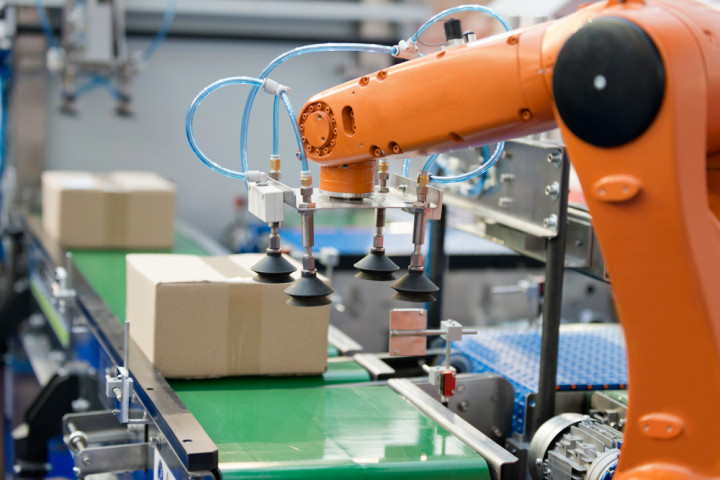Robots, will they take our jobs?
In the area of medicine, collaborative robots also have a role to play. Developed by Medineering GmbH, a Positioning Arm robot has been developed that allows a range of robotic tools to be held accurately in place during invasive surgery. The first tool, an Endoscopic Guidance Robot, ensures tremor-free positioning and accurate avoidance of sensitive tissue during surgical intervention. This third hand does replace a member of staff during the procedure. However, this also frees up that resource for the other tasks required of a medical professional, while additionally reducing the cost of such medical interventions.
Other types of robots will physically support humans undertaking repetitive tasks that often result in repetitive strain injury, but that current robots cannot be trained to do. The Cray X is an exoskeleton designed by German Bionic Systems for back support and lift assists. Holding power tools and working under a vehicle on a production line can be demanding on muscles and joints. Such exoskeletons complement the body, reducing strain and increasing comfort while working.
Other robots exist purely in the domain of software as chatbots. Supported by Deep Learning, these robots are capable of a certain level of natural language understanding and interaction. Many businesses are starting by trialling such robots internally, using them to handle IT support queries. Following an 80:20 rule, they are able to provide answers for many of the mundane questions posed, whilst recognising and forwarding questions that require human interaction.
Like the many technology revolutions before it, robots are unlikely to take all the jobs. For certain, the menial, mundane and repetitive are tasks that are most at risk. But like the computer revolution before it, the growth in robotics and progression in their capability will open up a wealth of opportunity. Society and government are obliged to understand these changes and their impact and ensure that we are prepared.
To some degree, this is happening already. Many countries around the world have put STEM programmes in place, raising the profile of careers in science, technology, engineering and mathematics. This will ensure that the next generation of school leavers are prepared for a world with more robotic interaction. And, as certain industries become more at risk of robotic intervention, governments will need to ensure that industry and society has the structures in place to provide support with reskilling.

Other types of robots will physically support humans undertaking repetitive tasks that often result in repetitive strain injury, but that current robots cannot be trained to do. The Cray X is an exoskeleton designed by German Bionic Systems for back support and lift assists. Holding power tools and working under a vehicle on a production line can be demanding on muscles and joints. Such exoskeletons complement the body, reducing strain and increasing comfort while working.
Other robots exist purely in the domain of software as chatbots. Supported by Deep Learning, these robots are capable of a certain level of natural language understanding and interaction. Many businesses are starting by trialling such robots internally, using them to handle IT support queries. Following an 80:20 rule, they are able to provide answers for many of the mundane questions posed, whilst recognising and forwarding questions that require human interaction.
Like the many technology revolutions before it, robots are unlikely to take all the jobs. For certain, the menial, mundane and repetitive are tasks that are most at risk. But like the computer revolution before it, the growth in robotics and progression in their capability will open up a wealth of opportunity. Society and government are obliged to understand these changes and their impact and ensure that we are prepared.
To some degree, this is happening already. Many countries around the world have put STEM programmes in place, raising the profile of careers in science, technology, engineering and mathematics. This will ensure that the next generation of school leavers are prepared for a world with more robotic interaction. And, as certain industries become more at risk of robotic intervention, governments will need to ensure that industry and society has the structures in place to provide support with reskilling.

Read full article
Hide full article


Discussion (0 comments)